Photo

🇺🇸 Until 590, the monument we all know as Castel Sant’Angelo was called the Mausoleum of Hadrian, precisely for the reason we have just talked about. In 590, however, a wave of pestilence was sweeping Rome: the archangel Michael appeared to Pope Gregory I during a procession to the Mausoleum while sheathing his sword as a sign of the end of the plague. To the most skeptical we will only say that the plague ended and that even today it is possible to see the footprints of the archangel on the stone where it appeared. Then, in honor of the archangel Michael and the good news he had brought, the Hadrian Mausoleum was called Castel Sant’Angelo and a statue depicting the angel was placed on top of the monument. 🇮🇹 Fino al 590 il monumento che tutti conosciamo come Castel Sant’Angelo si chiamava Mausoleo di Adriano, proprio per il motivo di cui abbiamo appena parlato. Nel 590 però un’ondata di pestilenza stava investendo Roma: l’arcangelo Michele apparve a Papa Gregorio I durante una processione al Mausoleo mentre rinfoderava la spada come segno della fine della peste. Ai più scettici diremo soltanto che la peste ebbe fine, e che ancora oggi è possibile vedere le impronte dell’arcangelo sulla pietra dove apparse. Quindi, in onore dell’arcangelo Michele e della buona notizia che aveva portato, il Mausoleo Adriano venne chiamato Castel Sant’Angelo e una statua raffigurante l’angelo venne collocata in cima al monumento. (presso Roma, Italia / Rome, Italy) https://www.instagram.com/p/CQ8o_TOBDtb/?utm_medium=tumblr
2 notes
·
View notes
Photo

🇺🇸 Why is it called the Trevi Fountain? There are various hypotheses on the origin of the name of the most famous fountain in the Eternal City. The first hypothesis is that the name "Trevi" derives from "Trebium", the place of origin near the Tiburtina. The second hypothesis is that it derives from “trivio”, that is to say, the intersection of the three streets Collatina, Prenestina, and Tiburtina, from which the water originates. The third hypothesis refers to Iuturna, the nymph invoked during the drought and who had a temple called “Trevi”. 🇮🇹 Perché si chiama Fontana di Trevi? Ci sono varie ipotesi sull'origine del nome della fontana più famosa della Città Eterna. La prima ipotesi è che il nome “Trevi” derivi da “Trebium”, la località di provenienza nei pressi della Tiburtina. La seconda ipotesi è che derivi da “trivio”, vale a dire l'incrocio delle tre vie Collatina, Prenestina e Tiburtina, da cui origina l'acqua. Con la terza ipotesi si fa riferimento a Iuturna, la ninfa invocata durante la siccità e che aveva un tempio chiamato “Trevi”. (presso Fontana Di Trevi-Roma) https://www.instagram.com/p/CQ5YQY8hrqv/?utm_medium=tumblr
0 notes
Photo
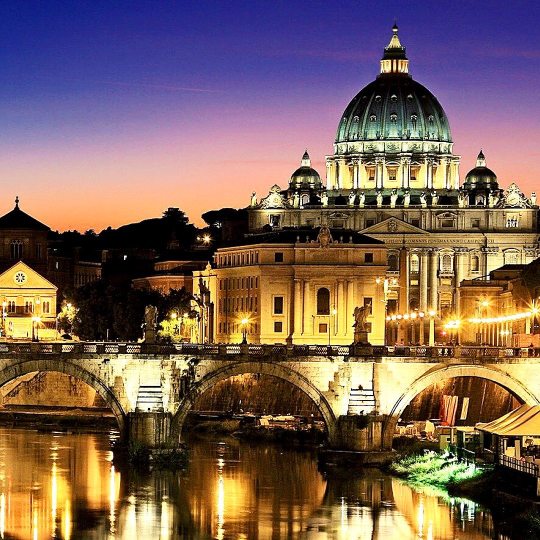
🇺🇸 Rome is called the Eternal City because ancient Romans believed that no matter what happened to the world, or how many empires rose or fell, that Rome would go on forever. The enduring quality of the city continues to this day and it’s no surprise with all its beauty and intrigue that Rome remains one of the most beloved tourist destinations in the world. 🇮🇹 Roma è chiamata la Città Eterna perché gli antichi romani credevano che non importasse cosa sarebbe successo al mondo, o quanti imperi sarebbero sorti o caduti, Roma sarebbe andata avanti per sempre. La qualità duratura della città continua fino ad oggi e non sorprende con tutta la sua bellezza e il suo intrigo che Roma rimanga una delle destinazioni turistiche più amate al mondo. (presso Roma, Italia / Rome, Italy) https://www.instagram.com/p/CQ2zMZCBYQA/?utm_medium=tumblr
0 notes
Photo
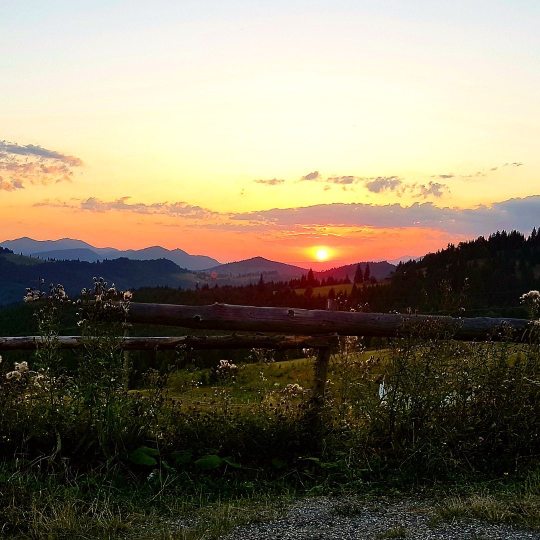
🇺🇸 The Tihuta Pass, also known as the "Land of Count Dracula" ... The legend of the vampire-count that inspired the Irish writer Bram Stoker, but also the true story of the Romanian prince Vlad Tepes, Prince of Wallachia, who went down in history as Vlad Dracul (i.e. son of the Dragon). The nickname came from his father, awarded the title of the Order of the Dragon, established by the German emperor and king of Hungary Sigismund of Luxembourg. The name of Vlad the Impaler (from the torture with which he punished the Turkish enemies) is also linked to the Tihuta Pass, which connects Transylvania to Moldavia, and where it is said that a castle would have risen that would have been the real one of the prince ... and on whose ruins a hotel was built in 1983, in the style of a medieval castle, which aims to recall that of the vampire-count of the famous novel. 🇮🇹 Il Passo Tihuta, noto anche come la “Terra del Conte Dracula”... La leggenda del conte-vampiro che ispirò lo scrittore irlandese Bram Stoker, ma anche la storia vera del principe romeno Vlad Tepes, principe della Valacchia, passato alla storia come Vlad Dracul (ossia figlio del Dragone). Il soprannome veniva dal padre, insignito del titolo dell’Ordine del Dragone, istituito dall’imperatore tedesco e re d’Ungheria Sigismundo di Lussemburgo. Il nome di Vlad l’Impalatore (dal supplizio con cui puniva i nemici turchi) è legato anche al Passo Tihuta, che collega la Transilvania alla Moldavia, e dove si dice sarebbe sorto un castello che sarebbe stato quello vero del principe... e sulle cui rovine fu costruito, nel 1983, un albergo, in stile di castello medievale, che ambisce a richiamare alla memoria quello del conte-vampiro del celebre romanzo. (presso Romania) https://www.instagram.com/p/CQ0KsrjBBv0/?utm_medium=tumblr
0 notes
Photo

🇺🇸 The world's largest saline Heliothermic lake is Lake Ursul (Bear Lake) in Sovata - central Transylvania. Heliothermic lakes contain a sun-heated layer of warm, saline water beneath a surface layer of cooler, less saline water. The two layers are separated by a chemocline, a stratum in which salinity increases progressively with depth. The lake was named after its shape which resembles a kind of bearskin. It is also the world's only natural lake whose formation time is precisely known, on May 27, 1875, at 11 a.m. a landslide led to the appearance of this hypersaline body of water. 🇮🇹 Il lago eliotermico salino più grande del mondo è il lago Ursul (lago dell'orso) a Sovata, nella Transilvania centrale. I laghi eliotermici contengono uno strato di acqua calda e salina, riscaldato dal sole, sotto uno strato superficiale di acqua più fresca e meno salina. I due strati sono separati da una chemoclina, uno strato in cui la salinità aumenta progressivamente con la profondità. Il lago prende il nome dalla sua forma che ricorda una specie di pelle d'orso. È anche l'unico lago naturale al mondo di cui si conosce con precisione l'epoca di formazione, il 27 maggio 1875, alle ore 11, una frana ha portato alla comparsa di questo specchio d'acqua ipersalino. (presso Romania) https://www.instagram.com/p/CQxlBoTBkAm/?utm_medium=tumblr
0 notes
Photo
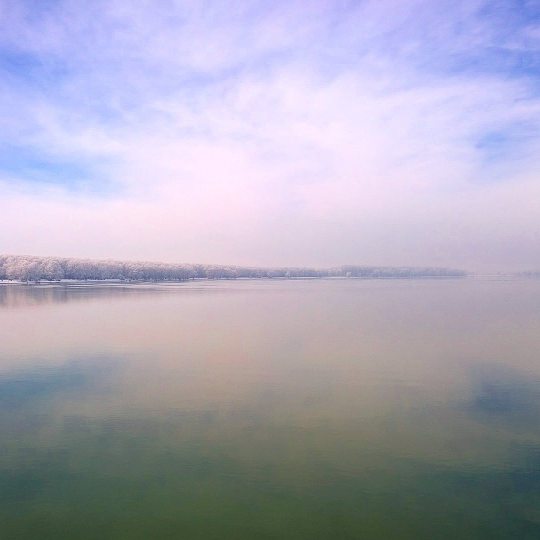
🇺🇸 The Danube flows through Europe's Straightforward West-east direction. As the starting point is in the Black Forest which is a region of Germany and flows all the way in the direction of the South-East till reaches the Black Sea in Romania. Still, the Danube is not the only river that empties into the Black Sea. All the way down the road the Danube river flows through or directly beside ten different countries just like Germany, Austria, Slovakia, Hungary, Serbia, Croatia, Bulgaria, Moldova, Ukraine, and Romania. It provides fresh drinking water for about 10 million people, with this Danube is one of the most important sources of water in this area. The river Danube is still a major shipping route nowadays for Central and even for Eastern Europe. This international waterway used to be at the heart o European political history for thousands of years. 🇮🇹 Il Danubio scorre attraverso la direzione Ovest-Est dell'Europa. Poiché il punto di partenza è nella Foresta Nera che è una regione della Germania e scorre tutta in direzione sud-est fino a raggiungere il Mar Nero in Romania. Tuttavia, il Danubio non è l'unico fiume che sfocia nel Mar Nero. Lungo tutta la strada il fiume Danubio scorre attraverso o direttamente accanto a dieci paesi diversi come Germania, Austria, Slovacchia, Ungheria, Serbia, Croazia, Bulgaria, Moldavia, Ucraina e Romania. Fornisce acqua potabile fresca a circa 10 milioni di persone, con questo Danubio è una delle fonti d'acqua più importanti in questa zona. Il fiume Danubio è ancora oggi un'importante rotta di navigazione per l'Europa centrale e persino per l'est. Questa via d'acqua internazionale è stata al centro della storia politica europea per migliaia di anni. (presso Danube River) https://www.instagram.com/p/CQvF75AhEzJ/?utm_medium=tumblr
0 notes
Photo
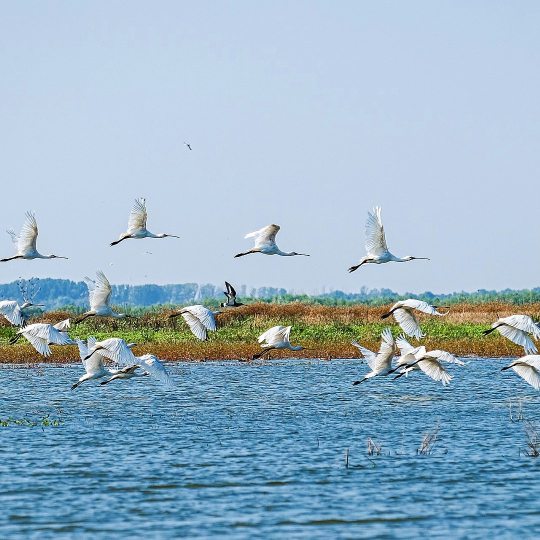
🇺🇸 The Danube Delta in Romania is a natural habitat for more than 1200 species of plants, with the richest ornithological fauna (more than 300 species including many species of pelicans) and fish (more than 100 species among which we remember the herring of the Danube and sturgeons) of the Old Continent, the Danube Delta is the largest biosphere reserve in Europe, with an area of 2,681 sq km. 🇮🇹 Il Delta del Danubio in Romania è un habitat naturale per più di 1200 specie di piante, con la più ricca fauna ornitologica (più di 300 specie tra cui tante specie di pellicani) e ittica (più di 100 specie tra cui ricordiamo l’aringa del Danubio e gli storioni) del Vecchio Continente, il Delta del Danubio è la più grande riserva della biosfera dell’Europa, con una superficie di 2.681 kmq. (presso Romania) https://www.instagram.com/p/CQsa8pVBOoQ/?utm_medium=tumblr
0 notes
Photo

🇺🇸 The imposing dam about 55 meters high houses a body of water that encompasses about 18 million cubic meters. The lake is located on the border of Dambovita and Prahova and is surrounded by coniferous forests. The view is even more spectacular during the winter; part of the lake freezes, while the pines are covered with snow. 🇮🇹 L’imponente diga alta circa 55 metri ospita un corpo idrico che ingloba circa 18 milioni di metri cubi. Il lago si trova al confine tra Dambovita e Prahova ed è circondato da foreste di conifere. La vista è ancora più spettacolare durante l’inverno; una parte del lago si ghiaccia, mentre i pini sono coperti di neve. (presso Lacul Bolboci Bucegi Romania) https://www.instagram.com/p/CQp38h5B54s/?utm_medium=tumblr
0 notes
Photo

🇺🇸 The park began to be built in 1901 on the initiative of the mayor of that time and was finished in 1903. Its design was made by the French architect Edouard Redont. In 1900, the park's plans were awarded a gold medal at the World's Fair in Paris. The total area is about 94 hectares. 🇮🇹 Il parco iniziò ad essere costruito nel 1901 su iniziativa del sindaco dell'epoca e fu terminato nel 1903. Il suo progetto fu realizzato dall'architetto francese Edouard Redont. Nel 1900, i piani del parco furono premiati con una medaglia d'oro all'Esposizione Universale di Parigi. La superficie totale è di circa 94 ettari. (presso Parcul Romanescu Craiova) https://www.instagram.com/p/CQnZ3iHhT4M/?utm_medium=tumblr
0 notes
Photo
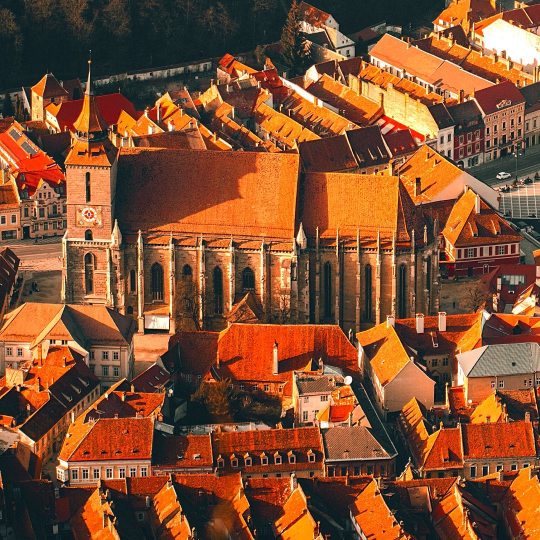
🇺🇸 The Black Church of Brașov is the biggest Gothic church in Eastern Europe, from Vienna to Istanbul. It was partially destroyed by the fire in 1689 and that gave this name, because of the darkened walls. Inside there is an impressive and magnificent Bucholz organ and the biggest collection of oriental carpets in Europe. 🇮🇹 La Chiesa Nera di Brașov è la più grande chiesa gotica dell'Europa orientale, da Vienna a Istanbul. Fu parzialmente distrutta dall'incendio del 1689 e da qui deriva questo nome, a causa delle mura annerite. All'interno vi è un imponente e magnifico organo Bucholz e la più grande collezione di tappeti orientali d'Europa. (presso Brașov) https://www.instagram.com/p/CQkw-5lFZBp/?utm_medium=tumblr
0 notes
Photo

🇺🇸 Sihla hermitage (a monk's hermitage) and the Cave of Saint Pius Teodora; the coffin with her relics, is kept today at the monastery Pecerska-Kyiv under the name of “The pious Teodora from the Carpathians. Burnt by the Turks in 1821, the church was rebuilt in 1824 from river stone and brick, high walls with four sides were raised, having two towers, while in the interior cells and a chapel were made. 🇮🇹 L'eremo di Sihla (eremo di monaci) e la Grotta di San Pio Teodora; la bara con le sue reliquie, è conservata oggi nel monastero Pecerska-Kyiv sotto il nome di “La pia Teodora dei Carpazi. Bruciata dai Turchi nel 1821, la chiesa fu ricostruita nel 1824 con pietra di fiume e mattoni, furono innalzate alte mura a quattro lati, dotate di due torri, mentre all'interno furono ricavate celle e una cappella. (presso Romania) https://www.instagram.com/p/CQiLG1qhF_0/?utm_medium=tumblr
0 notes
Photo
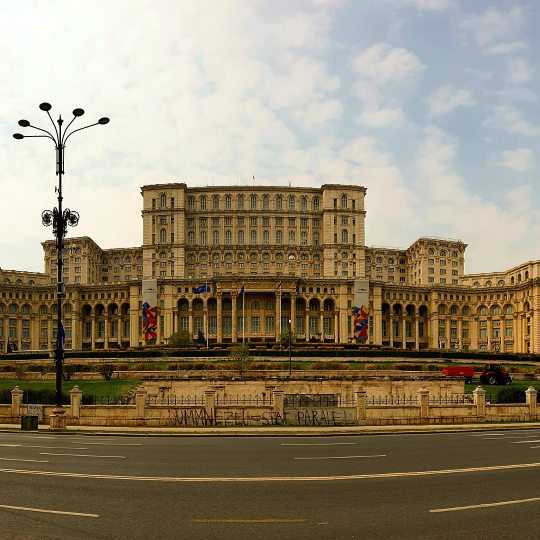
🇺🇸 The Palace of the Parliament is visible from the Moon. Yes, that’s right. The Great Wall of China and the Pentagon aren’t the only constructions in the world made by man that can be seen from the Moon. The Palace of the Parliament is also one of these unique and impressive constructions. ...and it is bigger than Cheops’ Pyramid. Cheops’ Pyramid from Egypt has a 2.550.000 m³ capacity which is pretty huge for a building, but, believe it or not, the Romanian Palace of the Parliament is bigger by 2%. 🇮🇹 Il Palazzo del Parlamento è visibile dalla Luna. Sì, è giusto. La Grande Muraglia Cinese e il Pentagono non sono le uniche costruzioni al mondo realizzate dall'uomo che possono essere viste dalla Luna. Il Palazzo del Parlamento è anche una di queste costruzioni uniche e imponenti. ...ed è più grande della piramide di Cheope. La piramide di Cheope dall'Egitto ha una capacità di 2.550.000 m³ che è piuttosto grande per un edificio, ma, che ci crediate o no, il Palazzo del Parlamento rumeno è più grande del 2%. (presso Bucharest Romania) https://www.instagram.com/p/CQfmm7BBn47/?utm_medium=tumblr
0 notes
Photo

🇺🇸 Switzerland is a country of towering mountains… With much of the country covered by the Alps, Switzerland is one of the highest countries in Europe. In total, there are precisely 208 Swiss mountains that stretch up past 3,000 meters. These include the legendary Matterhorn, which can be seen on bars of the famous Swiss chocolate brand, Toblerone. Here it is better for me to stop because I love chocolate too much and I can get fat just thinking about it. But imagine to seat on that bench with that panorama and taste Swiss chocolate... 🇮🇹 La Svizzera è un paese di montagne imponenti... Con gran parte del paese coperto dalle Alpi, la Svizzera è uno dei paesi più alti d'Europa. In totale, sono esattamente 208 le montagne svizzere che si estendono oltre i 3000 metri. Questi includono il leggendario Cervino, che può essere visto sulle tavolette del famoso marchio di cioccolato svizzero, Toblerone. Qui è meglio che mi fermi perché amo troppo il cioccolato e posso ingrassare solo a pensarci. Ma immagina di sederti su quella panchina con quel panorama e assaggiare il cioccolato svizzero... (presso Switzerland, Svizzera) https://www.instagram.com/p/CQdAljSBH2G/?utm_medium=tumblr
0 notes
Photo
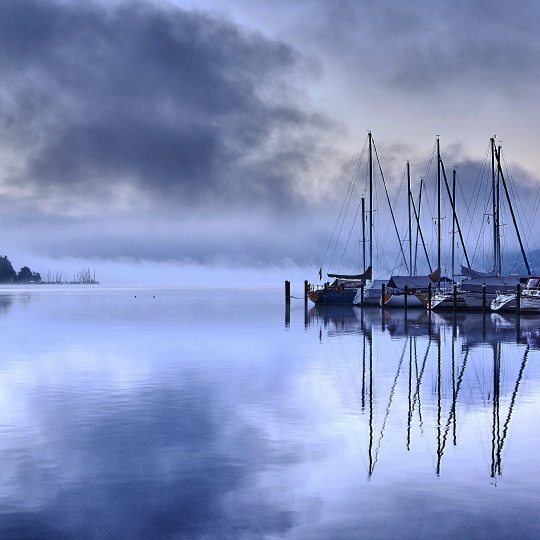
🇺🇸 Lake Constance was formed over time by the Rhine Glacier during the last ice age and is a type of lake known as a “Zungenbecken”—which translates as “tongue basin” in German. Even today the Rhine deposits sediment from the Swiss and Austrian Alps that continually change both the shoreline and clarity of the lake. Depending on the time of year the discrepancy of the inflow and outflow of the lake causes as much as a 4-meter difference in water level. 🇮🇹 Il lago di Costanza si è formato nel tempo dal ghiacciaio del Reno durante l'ultima era glaciale ed è un tipo di lago noto come "Zungenbecken", che in tedesco si traduce come "bacino della lingua". Ancora oggi il Reno deposita sedimenti dalle Alpi svizzere e austriache che modificano continuamente sia il litorale che la limpidezza del lago. A seconda del periodo dell'anno, la discrepanza tra l'afflusso e il deflusso del lago provoca un dislivello dell'acqua fino a 4 metri. (presso Lake Constance) https://www.instagram.com/p/CQafQ_eh9o8/?utm_medium=tumblr
0 notes
Photo
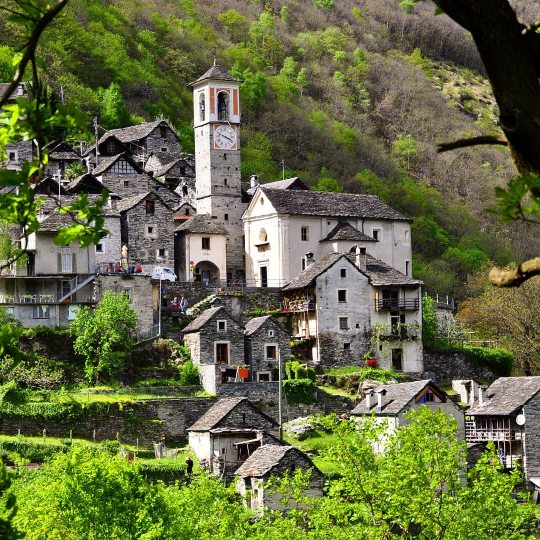
🇺🇸 Cantons United. Switzerland is comprised of cantons instead of states. There are 26 of these little "corners" squeezed into the small landlocked country, divided between the Alps, the Swiss Plateau, and the Jura and surrounded by five countries: Austria, France, Germany, Italy, and Liechtenstein. The close to 8 million citizens are mostly concentrated in the plateau. It's only fitting though since the Swiss motto is "Unus pro omnibus, omnes pro uno" or "One for all, all for one." 🇮🇹 Cantoni Uniti. La Svizzera è composta da cantoni anziché da stati. Sono 26 di questi piccoli "angoli" stretti nel piccolo paese senza sbocco sul mare, diviso tra le Alpi, l'Altopiano svizzero e il Giura e circondato da cinque paesi: Austria, Francia, Germania, Italia e Liechtenstein. I quasi 8 milioni di cittadini sono per lo più concentrati nell'altopiano. È giusto, però, dal momento che il motto svizzero è "Unus pro omnibus, omnes pro uno" o "Uno per tutti, tutti per uno". (presso Switzerland, Svizzera) https://www.instagram.com/p/CQX1lbWhPw8/?utm_medium=tumblr
0 notes
Photo
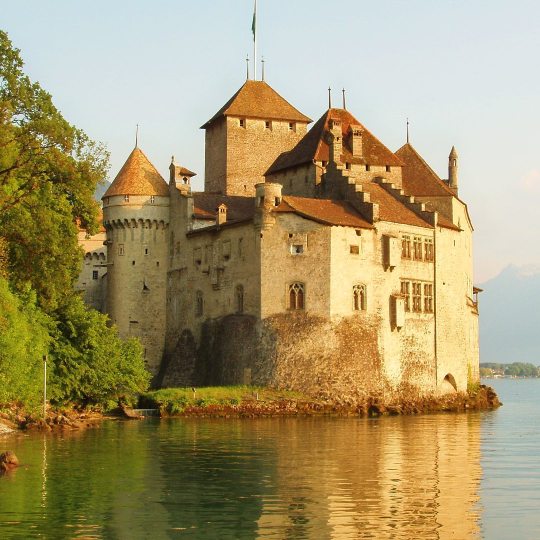
🇺🇸 The castle of Chillon is built on the island of Chillon, an oval limestone rock advancing in Lake Geneva between Montreux and Villeneuve with a steep side on one side and on the other side the lake and its steep bottom. The placement of the castle is strategic: it guards the passage between the Vaud Riviera, which allows access to the north towards Germany and France, and the Rhone valley, a quick route to Italy, and offers an excellent viewpoint over the Savoyard coast on the opposite side of the lake. A garrison could thus control (both militarily and commercially) access to the road to Italy and apply a toll. According to the Swiss ethnologist Albert Samuel Gatschet, the name Chillon derives from the Waldensian dialect and means "flat stone, slab, platform". The name Castrum Quilonis, attested from 1195, would, therefore, mean "castle built on a rock platform. 🇮🇹 Il castello di Chillon è costruito sull'isola di Chillon, una roccia calcarea ovale che avanza nel lago di Ginevra tra Montreux e Villeneuve con un lato scosceso da un lato e dall'altro il lago e il suo fondale scosceso. La collocazione del castello era strategica: presidiava il passaggio tra la riviera vodese, che permetteva l'accesso a nord verso la Germania e la Francia, e la valle del Rodano, via veloce per l'Italia, e offriva un ottimo punto di vista sulla costa sabauda sul sponda opposta del lago. Una guarnigione avrebbe potuto così controllare (sia militarmente che commercialmente) l'accesso alla strada per l'Italia e applicare un pedaggio. Secondo l'etnologo svizzero Albert Samuel Gatschet, il nome Chillon deriva dal dialetto valdese e significa "pietra piatta, lastra, piattaforma". Il nome Castrum Quilonis, attestato dal 1195, significherebbe quindi "castello costruito su una piattaforma rocciosa. (presso Chateu De Chillon, Switzerland) https://www.instagram.com/p/CQVTIEVBUjc/?utm_medium=tumblr
0 notes
Photo
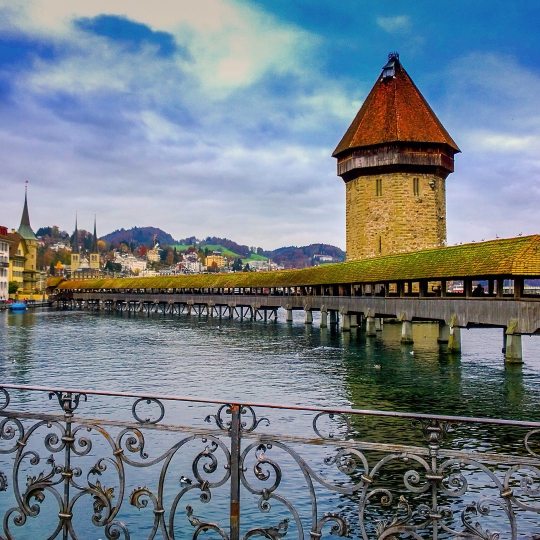
🇺🇸 The Chapel Bridge is Lucerne’s most iconic site. It’s an old wooden footbridge, the oldest of its kind in Europe, with a number of decorative paintings all along with its interior. Take a stroll along and admire the artwork within, sit on the walls of the river and watch as the bridge lights up at night when the Kapellbrücke is at its most spectacular. In 1993 a huge part of it was destroyed by a fire and after that they rebuilt the missing parts. 🇮🇹 Il Ponte della Cappella è il sito più iconico di Lucerna. È una vecchia passerella in legno, la più antica del suo genere in Europa, con numerosi dipinti decorativi insieme al suo interno. Fai una passeggiata e ammira le opere d'arte all'interno, siediti sulle pareti del fiume e osserva come il ponte si illumina di notte quando il Kapellbrücke è al suo massimo spettacolo. Nel 1993 gran parte di essa è stata distrutta da un incendio e successivamente sono state ricostruite le parti mancanti. (presso Luzern, Switzerland) https://www.instagram.com/p/CQSvTRGBUH6/?utm_medium=tumblr
0 notes